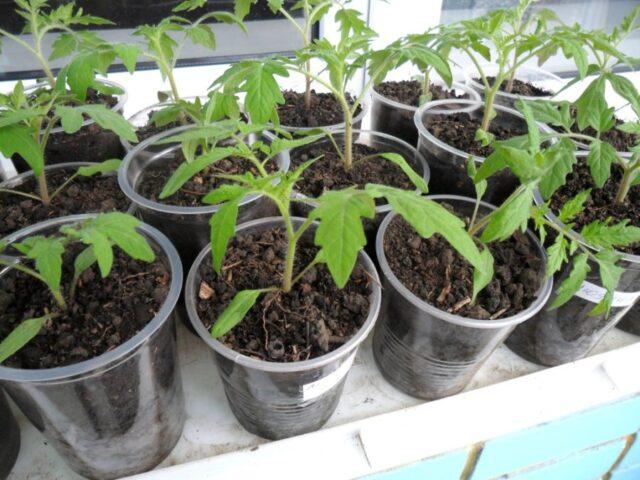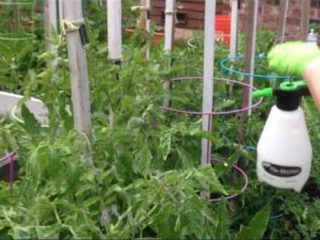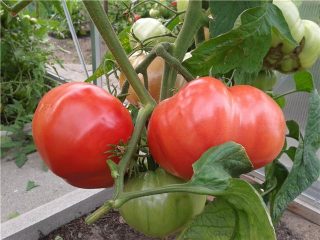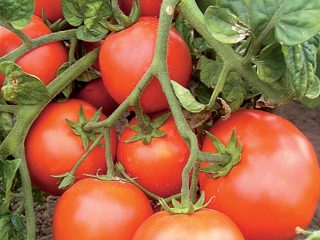Content
Tomato Fire is a hybrid variety with good yield and pleasant taste characteristics. Before planting a crop on a site, you need to study the basic requirements for growing conditions and care.
History of origin
Tomato Fire is a first generation hybrid labeled F1, entered into the State Register in 2012. The originators of the variety are breeders Gorshkova, Tereshonkova, Kostenko and Khovrin, and the applicant is the Poisk agricultural firm.
Tomato Fire is officially recommended for growing under film covers in private household plots. It is zoned for almost the entire country - it can be bred in the Northern and Central regions, Western and Eastern Siberia, the Volga region and the Far East.
Description of the tomato variety Fire
Tomato Fire is an indeterminate variety up to 1.6-2 m tall with medium-sized green leaves and short internodes. Forms simple inflorescences, forming 7-8 tomatoes, early ripening - 90-95 days after germination.
The fruits of the Fire tomato are round or slightly flattened, medium in size, with slightly pronounced ribbing.At the beginning of ripening, the tomatoes are light green with a bright spot at the base; as they ripen, they acquire a rich red hue. The skin of the fruit is dense and smooth, not prone to cracking. The pulp is fleshy and juicy, with a good sweet-sour taste and 4-6 seed chambers.

The weight of the Fire tomato reaches an average of 160-180 g
Tomato Fire is intended for growing indoors. It develops poorly in the open air, reacts sensitively to changes in temperature and humidity and does not produce large yields. When propagated in a greenhouse, it requires staking and shaping; the manufacturer recommends growing the crop in 1-2 stems.
Characteristics of tomato Fire
Tomato Fire is valued for its good fruiting performance and taste. Growing the variety in a greenhouse provides abundant harvests, and tomatoes can be used for any purpose.
Productivity and ripening period
The ripening time for the Fire tomato is on average three months. If seedlings are received in early April, the fruits can be harvested by the end of June.
The yield of the hybrid is very high. When growing bushes in a greenhouse with 1 m2 it is possible to collect up to 19.5 kg of ripe tomatoes.
Resistance to diseases and pests
Tomato has high immunity and is particularly resistant to tobacco mosaic virus, fusarium wilt and cladosporiosis. The variety rarely suffers from late blight, since the fungal disease usually affects tomato bushes from August, and Fire ends fruiting in July.
However, the hardy tomato remains vulnerable to root rot and bacterial infections. When growing in a greenhouse, bushes should not be over-watered. Plants need regular ventilation, as well as careful loosening of the soil.

To prevent bacterial infections, the roots, stems and fruits of tomato must be protected from damage.
Methods of use
The universal variety Fire is widely used in the kitchen. Tomatoes are well suited for adding to salads; tasty and healthy tomato juice is squeezed out of the juicy, dense pulp; pastes, sauces and purees are made.
The skin of the fruit is dense and does not crack, so Fire is often used for canning for the winter. It is recommended to roll tomatoes in large jars, which can easily accommodate several medium-sized tomatoes.
Advantages and disadvantages
Before planting a Fire tomato in a greenhouse, you need to familiarize yourself with its pros and cons. This will help provide the variety with proper care and get a good harvest.
Pros: · resistance to diseases; · high productivity; · good taste of fruits; · versatility of application; · early maturation; · fruits do not crack. | Minuses: · cannot be grown in open ground; · bushes require garter; · The hybrid cannot be propagated by its own seeds. |
The main advantage of the Fire tomato is its abundant fruiting. The need to grow a variety in a greenhouse is considered both an advantage and a disadvantage. On the one hand, the bushes do not take root in open ground conditions, but on the other hand, they are suitable for indoor cultivation in any region.
Features of cultivation
The agricultural technology of the Fire tomato is generally standard.Tomatoes are grown through seedlings according to the same rules as other varieties of crops. The algorithm is as follows:
- At the end of March, before planting, the seeds are soaked in a growth stimulant to increase germination.
- Fill a shallow box with light nutritious soil with the addition of humus, peat and sand.
- The seeds are sown in the furrows to a depth of about 1.5 cm with a distance of 3 cm from each other.
- Sprinkle the grains with sand and spray the container with a spray bottle, and then cover with film.
Before seedlings form, the box is placed in a warm place with dim lighting. After the greenery appears, the seedlings are moved to a sunny windowsill, the film is removed and germinated for two months with regular watering. In May, the tomato is transferred to a greenhouse with a soil temperature of at least 15 ° C and planted according to the scheme of 3-4 plants per 1 m2.

When the seedlings have 2-3 leaves of Tomato Fire, you need to dive into separate cups
Caring for the Fire variety comes down to several procedures:
- Watering. The soil in the greenhouse is moistened as it dries, avoiding waterlogging, 1-2 times a week.
- Feeding. Tomato Fire is fertilized with bird droppings or a solution of wood ash, as well as complex minerals at intervals of 2-3 weeks up to four times per season.
- Weeding and loosening. After each watering, the hard crust that forms on the surface of the soil is carefully broken under the bushes. At the same time, weeds that take away nutrients from the tomato are removed.
When growing in a greenhouse, Fire must be regularly ventilated. The variety tolerates high air humidity well, but with a lack of oxygen it begins to suffer from bacterial and fungal diseases.
Pest and disease control
Tomato Fire is immune to some ailments. But certain fungi and insects can pose a danger when grown in greenhouses. Among them:
- root rot - the disease develops against the background of waterlogging, the stem at the base turns black and withers;
To prevent root rot, spray with copper sulfate.
- powdery mildew - a white coating forms on the leaves and spreads from the bottom of the bush to the top;
At the first symptoms of powdery mildew, you need to use the drug Topsin and similar
- mole cricket - the pest moves in the soil and damages tomato roots and shoots at the base;
For mole crickets, the soil is treated with the drug Grom and the vinegar solution is poured directly into the tunnels in the ground
- wireworm - the larvae of the click beetle feed on the underground part of tomato bushes and gnaw through the stems from the inside.
To protect against wireworms, you need to regularly loosen and lime the soil.
The main measure to prevent pests and diseases of tomato in a greenhouse is regular ventilation and moderate watering as needed. Bushes should not be placed too close to each other - when plantings are dense, infections develop more often.
Conclusion
The Fire tomato has good yields and is suitable for growing in greenhouses throughout Russia. Caring for the variety is simple, although installing trellises and monitoring soil moisture in the greenhouse can cause certain difficulties.
Reviews from gardeners about the Fire tomato












